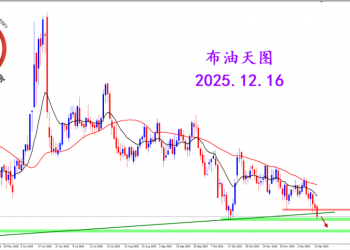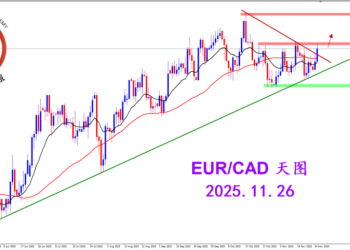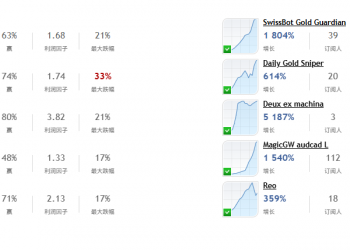如果这是真的, 欧洲可真的要大崩。 顺便解气的是, 可恶的巴西淡水河谷那么欺负中国,不停的提价, 该崩。
Europe on the brink of currency crisis meltdown
By Ambrose Evans-Pritchard
Last Updated: 12:01am GMT 27/10/2008
The financial crisis spreading like wildfire across the former Soviet bloc threatens to set off a second and more dangerous banking crisis in Western Europe, tipping the whole Continent into a fully-fledged economic slump.
Currency pegs are being tested to destruction on the fringes of Europe’s monetary union in a traumatic upheaval that recalls the collapse of the Exchange Rate Mechanism in 1992.
“This is the biggest currency crisis the world has ever seen,” said Neil Mellor, a strategist at Bank of New York Mellon.
Experts fear the mayhem may soon trigger a chain reaction within the eurozone itself. The risk is a surge in capital flight from Austria – the country, as it happens, that set off the global banking collapse of May 1931 when Credit-Anstalt went down – and from a string of Club Med countries that rely on foreign funding to cover huge current account deficits.
The latest data from the Bank for International Settlements shows that Western European banks hold almost all the exposure to the emerging market bubble, now busting with spectacular effect.
They account for three-quarters of the total $4.7 trillion £2.96 trillion) in cross-border bank loans to Eastern Europe, Latin America and emerging Asia extended during the global credit boom – a sum that vastly exceeds the scale of both the US sub-prime and Alt-A debacles.
Europe has already had its first foretaste of what this may mean. Iceland’s demise has left them nursing likely losses of $74bn (£47bn). The Germans have lost $22bn. Stephen Jen, currency chief at Morgan Stanley, says the emerging market crash is a vastly underestimated risk.
It threatens to become “the second epicentre of the global financial crisis”, this time unfolding in Europe rather than America. Austria’s bank exposure to emerging markets is equal to 85pc of GDP – with a heavy concentration in Hungary, Ukraine, and Serbia – all now queuing up (with Belarus) for rescue packages from the International Monetary Fund. Exposure is 50pc of GDP for Switzerland, 25pc for Sweden, 24pc for the UK, and 23pc for Spain.
The US figure is just 4pc. America is the staid old lady in this drama. Amazingly, Spanish banks alone have lent $316bn to Latin America, almost twice the lending by all US banks combined ($172bn) to what was once the US backyard. Hence the growing doubts about the health of Spain’s financial system – already under stress from its own property crash – as Argentina spirals towards another default, and Brazil’s currency, bonds and stocks all go into freefall.
Broadly speaking, the US and Japan sat out the emerging market credit boom. The lending spree has been a European play – often using dollar balance sheets, adding another ugly twist as global “deleveraging” causes the dollar to rocket. Nowhere has this been more extreme than in the ex-Soviet bloc. The region has borrowed $1.6 trillion in dollars, euros, and Swiss francs. A few dare-devil homeowners in Hungary and Latvia took out mortgages in Japanese yen.
They have just suffered a 40pc rise in their debt since July. Nobody warned them what happens when the Japanese carry trade goes into brutal reverse, as it does when the cycle turns. The IMF’s experts drafted a report two years ago – Asia 1996 and Eastern Europe 2006 – Déjà vu all over again? – warning that the region exhibited the most dangerous excesses in the world. Inexplicably, the text was never published, though underground copies circulated.
Little was done to cool credit growth, or to halt the fatal reliance on foreign capital. Last week, the silent authors had their moment of vindication as Eastern Europe went haywire. Hungary stunned the markets by raising rates 3pc to 11.5pc in a last-ditch attempt to defend the forint’s currency peg in the ERM. It is just blood in the water for hedge funds sharks, eyeing a long line of currency kills.
“The economy is not strong enough to take it, so you know it is unsustainable,” said Simon Derrick, currency strategist at the Bank of New York Mellon. Romania raised its overnight lending to 900pc to stem capital flight, recalling the near-crazed gestures by Scandinavia’s central banks in the final days of the 1992 ERM crisis – political moves that turned the Nordic banking crisis into a disaster.
Russia too is in the eye of the storm, despite its energy wealth – or because of it. The cost of insuring Russian sovereign debt through credit default swaps (CDS) surged to 1,200 basis points last week, higher than Iceland’s debt before Götterdammerung struck Reykjavik. The markets no longer believe that the spending structure of the Russian state is viable as oil threatens to plunge below $60 a barrel.
The foreign debt of the oligarchs ($530bn) has surpassed the country’s foreign reserves. Some $47bn has to be repaid over the next two months. Traders are paying close attention as contagion moves from the periphery of the eurozone into the core. They are tracking the yield spreads between Italian and German 10-year bonds, the stress barometer of monetary union.
The spreads reached a post-EMU high of 93 last week. Nobody knows where the snapping point is, but anything above 100 would be viewed as a red alarm. The market took careful note on Friday that Portugal’s biggest banks, Millenium, BPI, and Banco Espirito Santo are preparing to take up the state’s emergency credit guarantees. Hans Redeker, currency chief at BNP Paribas, says there is an imminent danger that East Europe’s currency pegs will be smashed unless the EU authorities wake up to the full gravity of the threat, and that in turn will trigger a dangerous crisis for EMU itself.
“The system is paralysed, and it is starting to look like Black Wednesday in 1992. I’m afraid this is going to have a very deflationary effect on the economy of Western Europe. It is almost guaranteed that euroland money supply is about to implode,” he said.
A grain of comfort for British readers: UK banks have almost no exposure to the ex-Communist bloc, except in Poland – one of the less vulnerable states. The threat to Britain lies in emerging Asia, where banks have lent $329bn, almost as much as the Americans and Japanese combined.
Whether you realise it or not, your pension fund is sunk in Vietnamese bonds and loans to Indian steel magnates. Didn’t they tell you? |
 2025.12.16 图文交易计划:布油开放下行 关2572 人气#黄金外汇论坛
2025.12.16 图文交易计划:布油开放下行 关2572 人气#黄金外汇论坛 2025.11.26 图文交易计划:欧加试探拉升 关3169 人气#黄金外汇论坛
2025.11.26 图文交易计划:欧加试探拉升 关3169 人气#黄金外汇论坛 MQL5全球十大量化排行榜3235 人气#黄金外汇论坛
MQL5全球十大量化排行榜3235 人气#黄金外汇论坛 【认知】6028 人气#黄金外汇论坛
【认知】6028 人气#黄金外汇论坛